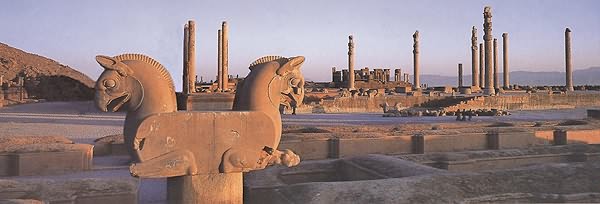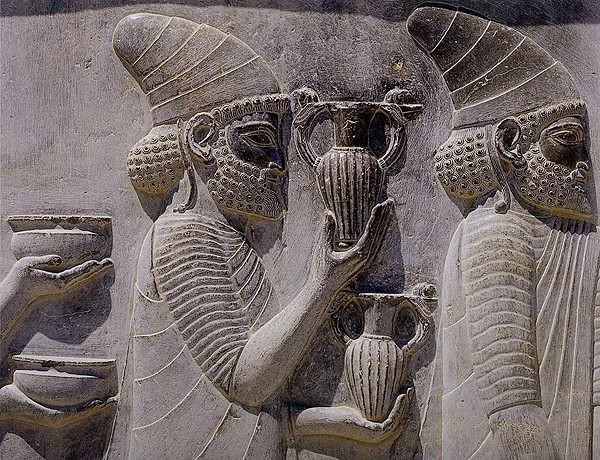|
The center of the great Persian Empire, cereal capital of the Achaemenian and the showpiece of Achaemenian art, Persepolis (Capital of Persia, in Greek) is a historic site in Fars Province, 60 km. to the northeast of Shiraz by road, for which the Iranians have got their own name: Takht Jamshid (The Throne of Jamshid), Jamshid being the first, probably mythical, ruler of Iran. It is 420 km. south of Isfahan and 835 kin. south of Tehran on a first-class asphalt road. It can be reached by air through Shiraz international airport. Also called Parse by the ancient Persians, it was used as a residence by the Achaemenian kings, beginning with Darius I in the late 6th century B.C. The site consists of the remains of several mental buildings on a vast stone terrace surrounded by a brick wall. The palace and audience hall (Apadana) of Darius I contain sculptured relief depicting Achaemenian court cerise. Thirteen of the Apadana massive stone columns are still standing, and its broad double staircase has been restored by archaeologists. At Naqsh Rustam, some 6 km. (about 4 mi.) northwest of Persepolis are the Achaemenian royal tombs. Plundered and burned by Alexander the Great in 3 3 0 B. C., Persepolis was eventually abandoned. Excavation of the site began in 193 1, supervised by James Henry Breasted of the University of Chicago's Oriental Institute.



|